“In the 1920s, it owned & operated 58 woolen mills across New England controlling 20% of the country’s woolen production.”
*
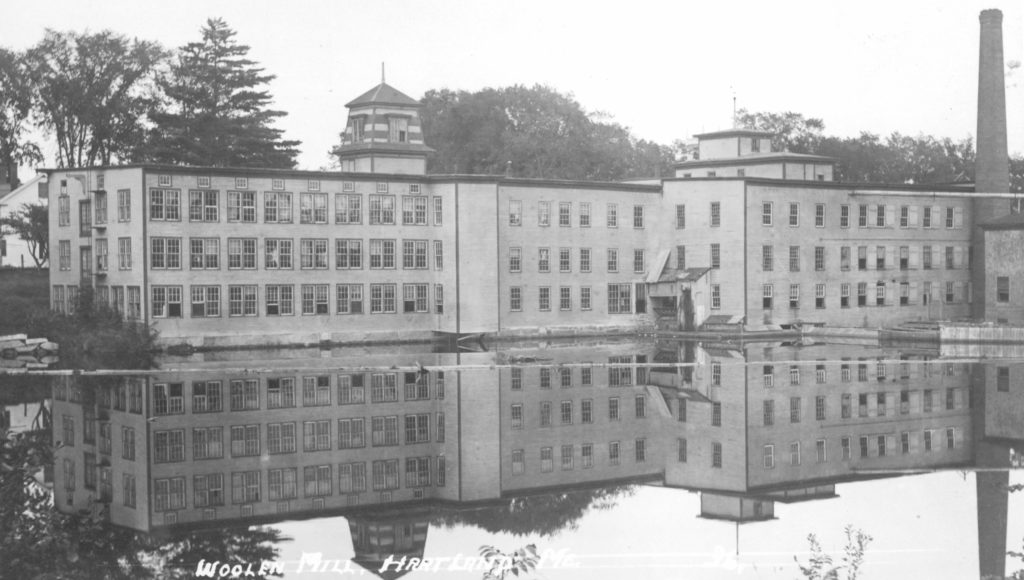
American Woolen Company – Upper Hartland Mill
*
“The American Woolen Company was originally established in 1899 through the consolidation of eight financially troubled New England woolen mills. Overproduction, competition and poor management had brought the New England textile industry to its knees by the 1890s. In particular, family trusts, the main shareholders of many of the mills, insisted on receiving high dividends instead of making necessary capital improvements. At the company’s height in the 1920s, it owned and operated 58 woolen mills across New England and controlled 20% of the country’s woolen production. It owned mills in Dover-Foxcroft, Fairfield, Madison, Newport, Oakland, Old Town, Pittsfield and Skowhegan.”
*
In 1915, the Linn Manufacturing Company bowed to numerous management issues and financial pressures and declared bankruptcy marking the end of over half a century of the Linn Family operating woolen mills in Hartland. While the exact details are presently unknown, the mill buildings were leased to the American Woolen Company soon after and production continued under a lease agreement.
*
Notice of Public Auction & Foreclosure Proceedings
The Linn Woolen Mills in Hartland, Maine will be sold at public auction under foreclosure proceedings at the offices of the company at 1 o’clock on Wednesday, March 29, 1916. This mill is under limited lease to, and is now being operated by the American Woolen Company. Manufacturers interested in securing a location which provides ample trained labor, non union, abundant water power, good shipping facilities and a thoroughly well equipped plant are requested to correspond at once with the undersigned trustees.
Henry F. Libby
William L. Pushor
George M. Lancey
The auction was postponed until April 18, 1916 and eventually canceled when the American Woolen Company purchased the mills.
*
The American Woolen Company’s $95,000 purchase included the 2 main mills, several smaller mill related buildings and much of the vast real estate holdings of the Linn Manufacturing Company and the Archibald Linn Estate which included numerous homes and lots they had acquired or built. Many of these holdings were also real estate, houses and buildings which Archibald Linn had purchased over the years before his death in 1889.
The Linn Mills had utilized the natural resources of the Sebasticook River as their primary power source for their operations first by water driven means and later by steam. One of the first major upgrades made by the American Woolen Company in 1917 was to build a dedicated coal powered Boiler Room next to the lower mill replacing the former George W. Furber Jewelry Store.
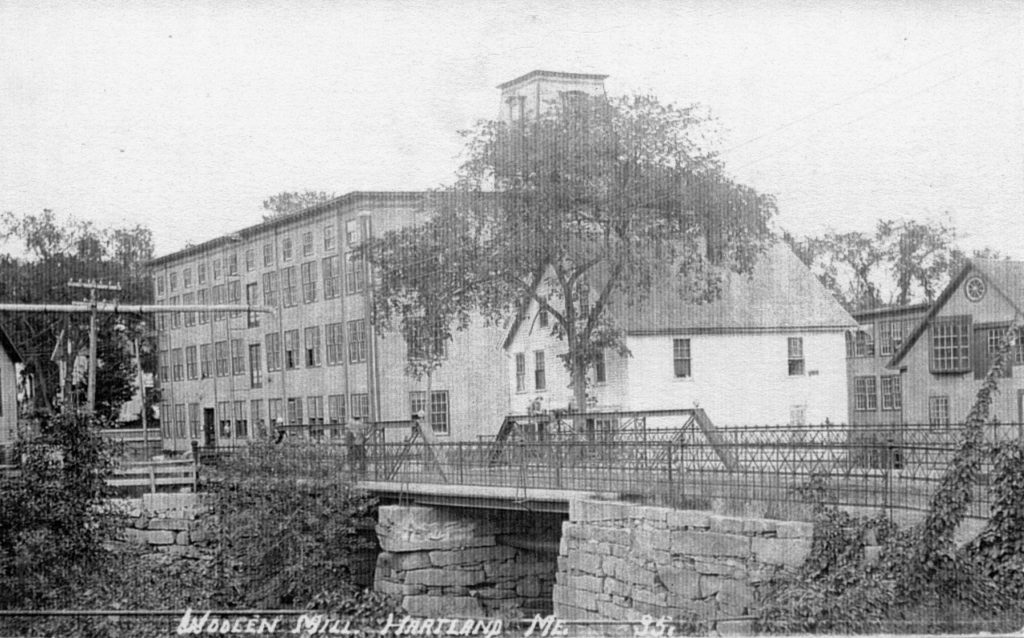
American Woolen Company Lower Hartland Mill before the Boiler Room was built
*
As noted on the crop of the Sanborn Fire Insurance Map in December of 1917, the new Boiler Room was “being built” at the time.

American Woolen Company – 1917
*
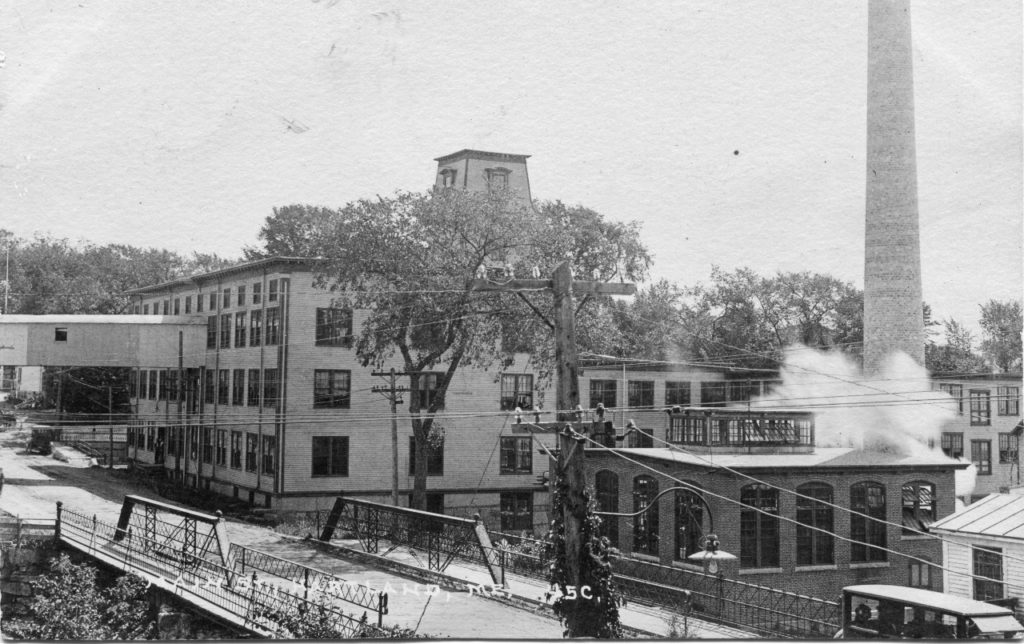
The new Boiler Room seen many years after it was built
*
The white building replaced by the new Boiler Room was moved further up Main Street. It had been home to several business going back before 1860 including George W. Furbush’s jewelry store in the late 1890s. The house and new property would be sold at the Great Auction of 1932 to Alton Leadbetter. It was purchased by Albert Deering, Jr by 1943 and later became the home of his son, Maynard Deering, Sr.
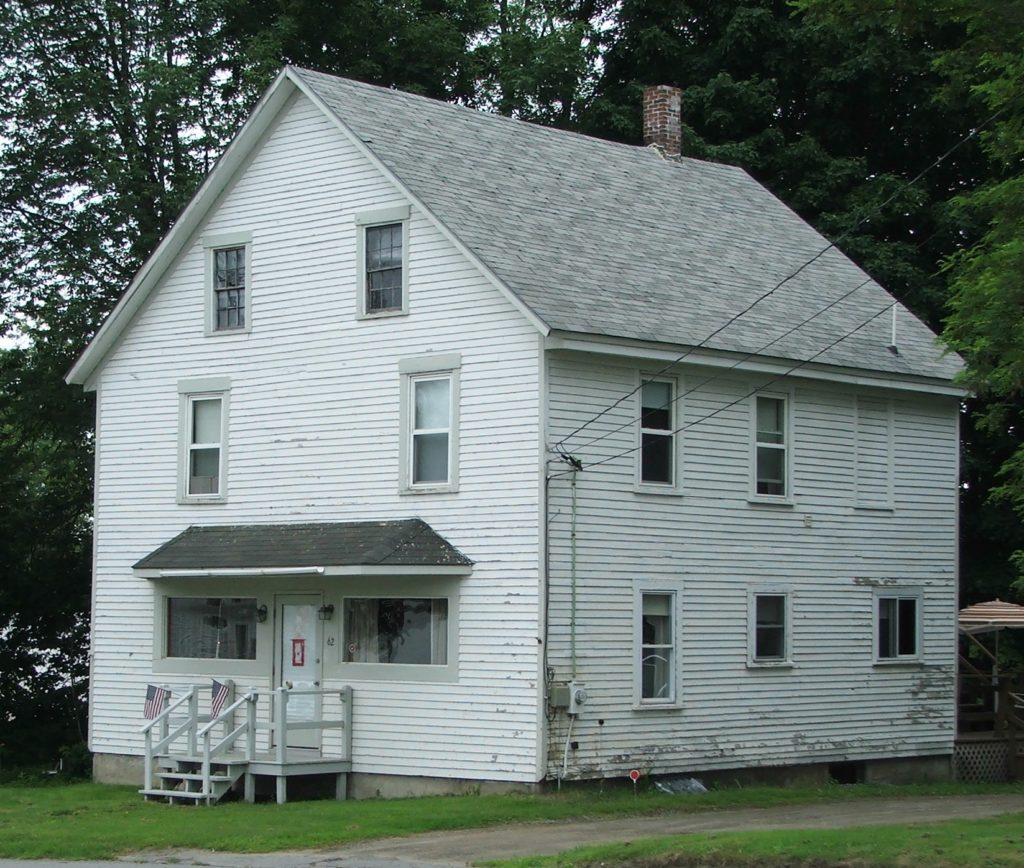
Former G. W. Furbush Jewelry Store moved further up Main Street – 2009
*
Although coal was readily available when the new Boiler Room was being built, an unusually bitter cold in December of 1917 throughout the Northeast caused severe coal shortages which continued into January and early February. By January 12, 1918, the country was concerned the shortage might affect war plants fueling America’s recent and escalating role on the Western Front of World War I. Five days later, Harry Garfield, Supervisor of the Federal Fuel Administration, ordered that all industrial plants east of the Mississippi close for five days and that “Fireless Mondays” were to be encouraged for weeks afterward. In spite of several new lucrative U. S. Government contracts to supply troops with woolen blankets, the Hartland mill shut down numerous times during this coal shortage; sometimes for several days in a row.

American Woolen Company Upper & Lower Woolen Mills in Hartland – Panoramic View – c1920
*
We cannot confirm these donated photos below were taken at the Hartland woolen mill, but they do represent a similar and unique glimpse into how many of the woolen mills looked like inside at the time.
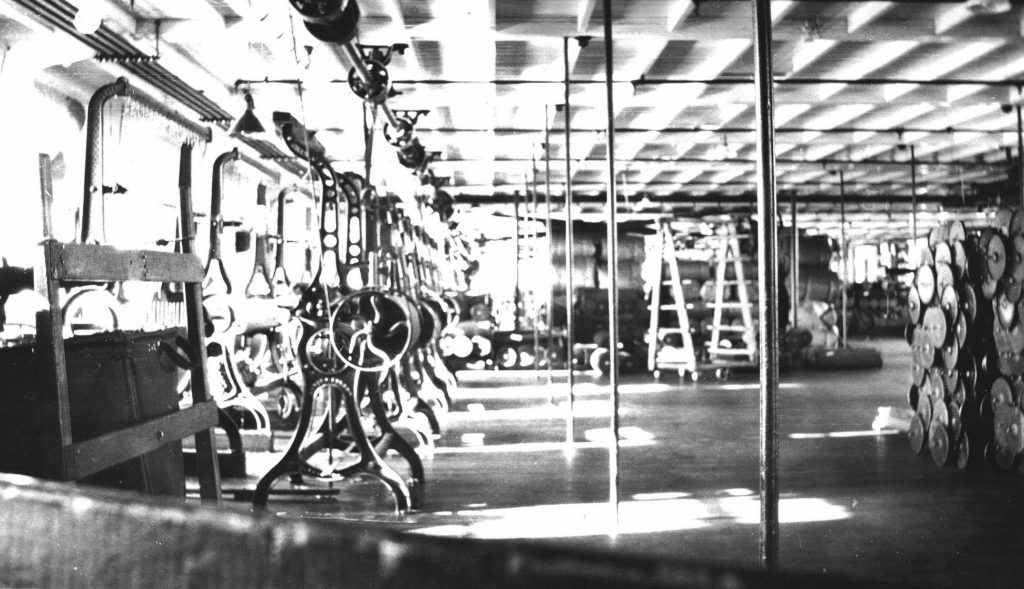
Unknown Woolen Mill Interior #1
*
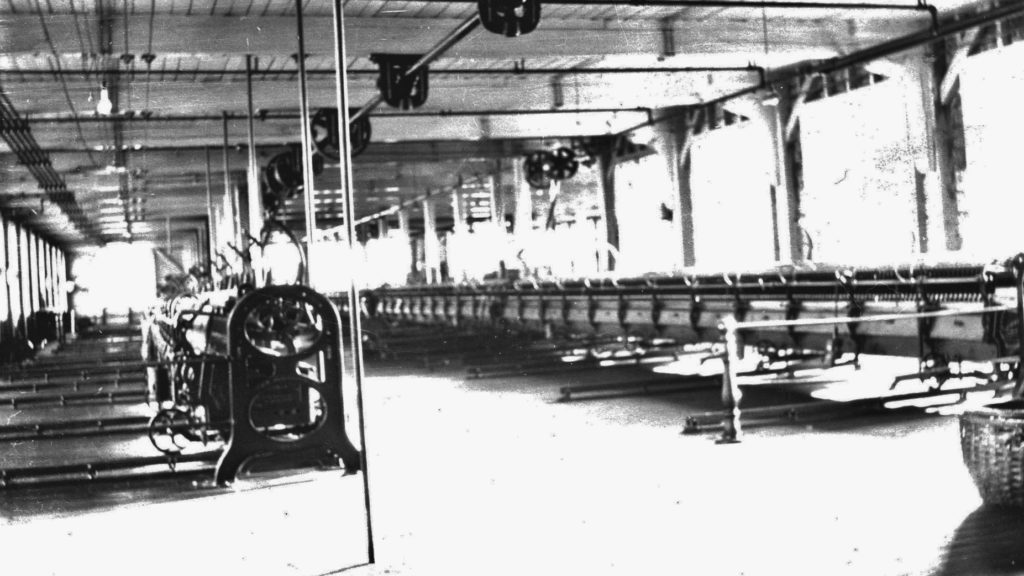
Unknown Woolen Mill Interior #2
*
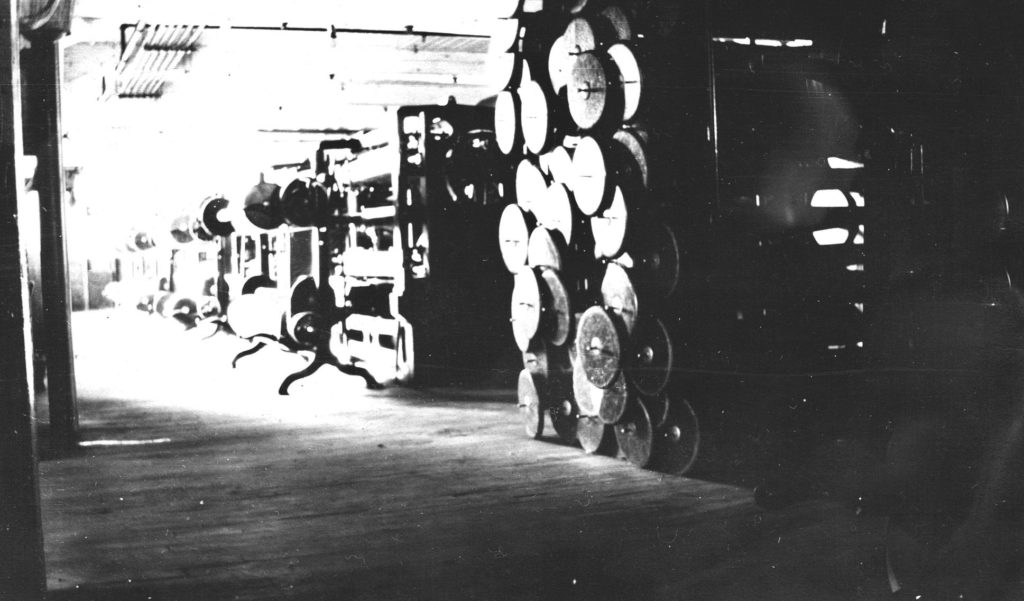
Unknown Woolen Mill Interior #3
*
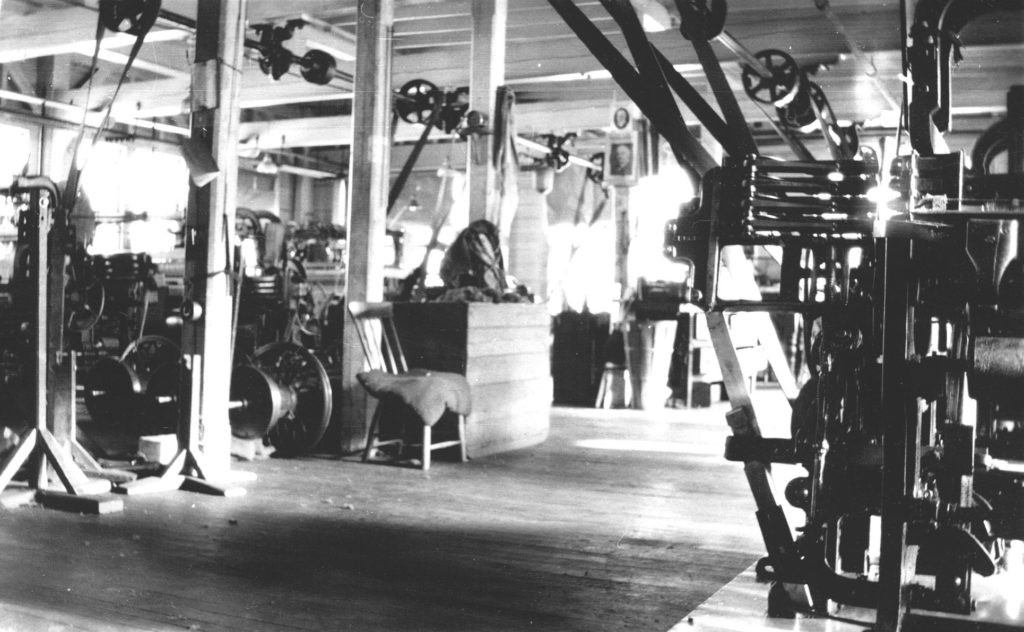
Unknown Woolen Mill Interior #4
*
The Great Flood of 1923 caused extensive damage once again to the woolen mill and surrounding area.
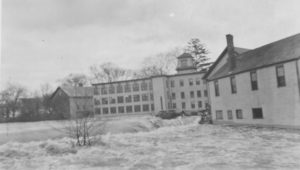
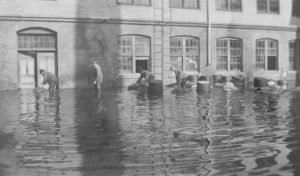
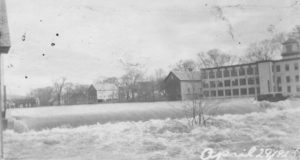
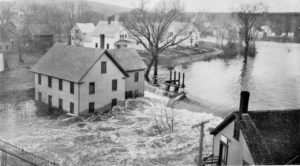
The Great Flood of 1923
*
For the next few years, the American Woolen Company operated successfully employing a couple hundred people from Hartland and surrounding towns. The woolen goods market remained strong following World War I and further local investments were made by the company including upkeep of 4 existing employee houses built on Upper Mill Street and 3 houses on Hubbard Avenue built by the Linn Manufacturing Company. Census Reports for Hartland from 1920 and 1930 indicate numerous people worked at the American Woolen Company mill, often times with several family members employed there, too.
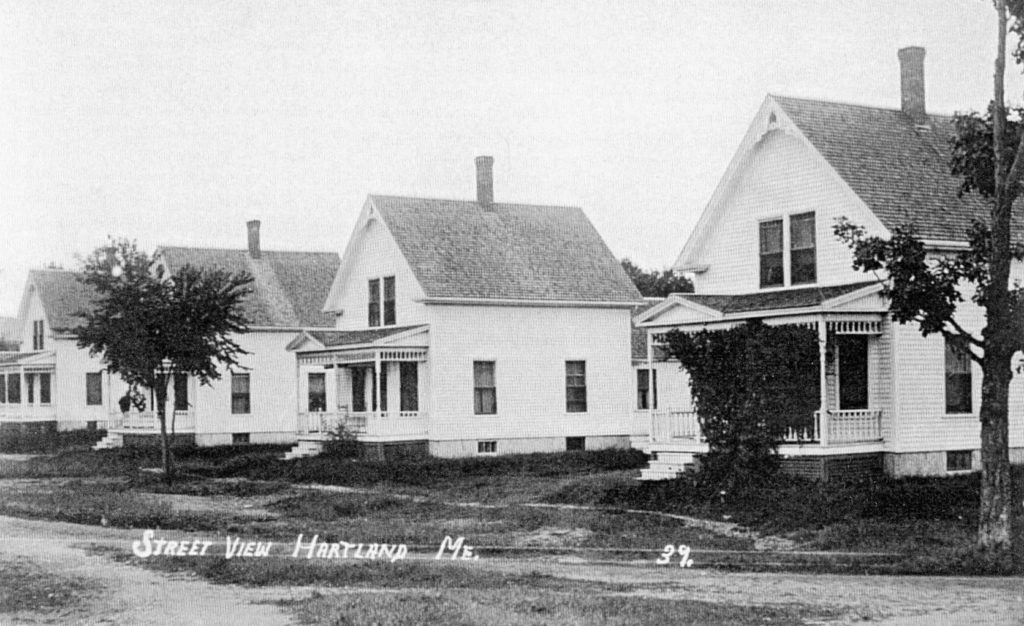
Upper Mill Street Houses maintained by the American Woolen Company
*
Overall, the American Woolen Company venture in Hartland was going well until October 29, 1929; now infamously known as “Black Friday”. While the 1929 Stock Market crash didn’t adversely affect Hartland immediately, the resulting “Great Depression” nationally finally gripped the town in 1931 when the American Woolen Company requested a large tax break on their Hartland mill holdings because of their own overall economic woes throughout all their operations.
It was the first sign of troubles for the company which owned and operated some 60 woolen mills in New England including several in Maine. While the company made some efforts keep the mill open, in 1932 they officially announced they would close the Hartland location and surrender all their property holdings.
*
Shortly after the American Woolen Mills bankruptcy filing, much of the vast real estate holdings it had purchased in Hartland from the Linn Manufacturing Company and the Archibald Linn Estate were sold at the Great Auction of 1932. The auction did not include the 2 main mills or several of the smaller buildings on the mill property which were eventually abandoned and surrendered to the town.
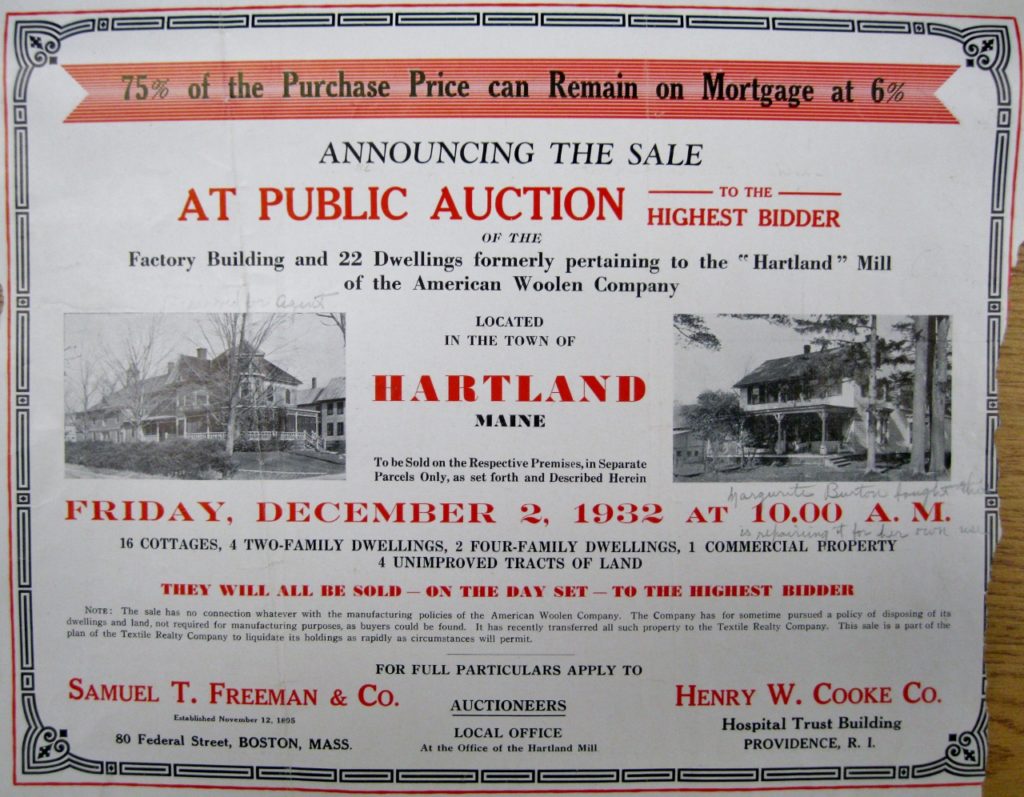
Cover of the Great Auction of 1932 Brochure
*
The closing of the American Woolen Company in Hartland meant a substantial loss of employment, tax income and a considerable strain on the local economy, all of which depended heavily on the woolen mill. Citizens knew the future of Hartland rested upon finding a suitable and long term replacement at the abandoned facility. Many of these citizens would quickly band together in one of the town’s greatest moments of cooperation in an unprecedented effort to bring a new industry to town with the formation of Hartland Mills, Incorporated.